Names of the Numbers
Names of the numbers are discussed here in this topic. Students can learn from here how to name a number. The number is named on the basis of the place values of the concerned digits. The name is taken according to place values of the digits, starting from highest place value to lowest place value.
As: (i) 56 = 50 + 6 = fifty six.
(ii) 93 is named as ninety three (place value of 9 = 90, of 3 is 3). We can expand the number and then it is named as.
93 = 90 + 3 = ninety three.
(iii) 375
= 300 + 70 + 5.
So, the name is three hundred seventy five.
(iv) 729
= 700 + 20 + 9.
So, the name is seven hundred twenty nine.
(v) 2584 = 2000 + 500 + 80 + 4.
Two thousand five hundred eighty four.
(vi) 4367 = 4000 + 300 + 60 + 7.
Four thousand three hundred sixty seven.
(vii) 12578 = 10000 + 2000 + 500 + 70 + 8
= 12000 + 500 + 70 + 8
Twelve thousand five hundred seventy eight.
(viii) 17935 = 10000 + 7000 + 900 + 30 + 5
= 17000 + 900 + 30 + 5
Seventeen thousand nine hundred thirty five.
(ix) 52786 = 50000 + 2000 + 700 + 80 + 6
Fifty thousand + two thousand + seven hundred + eighty + six.
Fifty two thousand seven hundred eighty six.
(x) 753684 = 700000 + 50000 + 3000 + 600 + 80 + 4
Seven hundred thousand + fifty thousand + three thousand + six hundred + eighty + four
Seven hundred fifty three thousand six hundred eighty four.
These are the names of the numbers.
Related Concept
● Numbers Showing on Spike Abacus.
● 1 Digit Number on Spike Abacus.
● 2 Digits Number on Spike Abacus.
● 3 Digits Number on Spike Abacus.
● 4 Digits Number on Spike Abacus.
● 5 Digits Number on Spike Abacus.
● Problems Related to Place Value.
● Example on Comparison of Numbers.
● Successor and Predecessor of a Whole Number.
● Formation of Numbers with the Given Digits.
● Formation of Greatest and Smallest Numbers.
● Examples on the Formation of Greatest and the Smallest Number.
From Names of the Numbers to HOME PAGE
Didn't find what you were looking for? Or want to know more information about Math Only Math. Use this Google Search to find what you need.
Recent Articles
-
Converting Fractions to Decimals | Solved Examples | Free Worksheet
Apr 26, 25 05:04 PM
In converting fractions to decimals, we know that decimals are fractions with denominators 10, 100, 1000 etc. In order to convert other fractions into decimals, we follow the following steps: -
Converting Decimals to Fractions | Solved Examples | Free Worksheet
Apr 26, 25 04:56 PM
In converting decimals to fractions, we know that a decimal can always be converted into a fraction by using the following steps: Step I: Obtain the decimal. Step II: Remove the decimal points from th… -
Worksheet on Decimal Numbers | Decimals Number Concepts | Answers
Apr 26, 25 03:48 PM
Practice different types of math questions given in the worksheet on decimal numbers, these math problems will help the students to review decimals number concepts. -
Multiplication Table of 4 |Read and Write the Table of 4|4 Times Table
Apr 26, 25 01:00 PM
Repeated addition by 4’s means the multiplication table of 4. (i) When 5 candle-stands having four candles each. By repeated addition we can show 4 + 4 + 4 + 4 + 4 = 20 Then, four 5 times -
Subtraction of Decimals | Subtracting Decimals | Decimal Subtraction
Apr 24, 25 03:25 PM
We will discuss here about the subtraction of decimals. Decimals are subtracted in the same way as we subtract ordinary numbers. We arrange the digits in columns

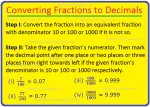
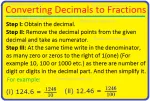
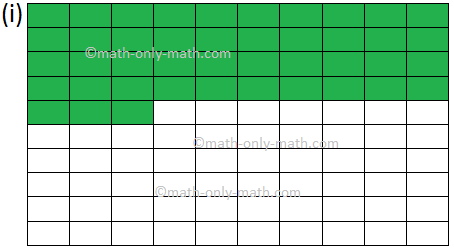
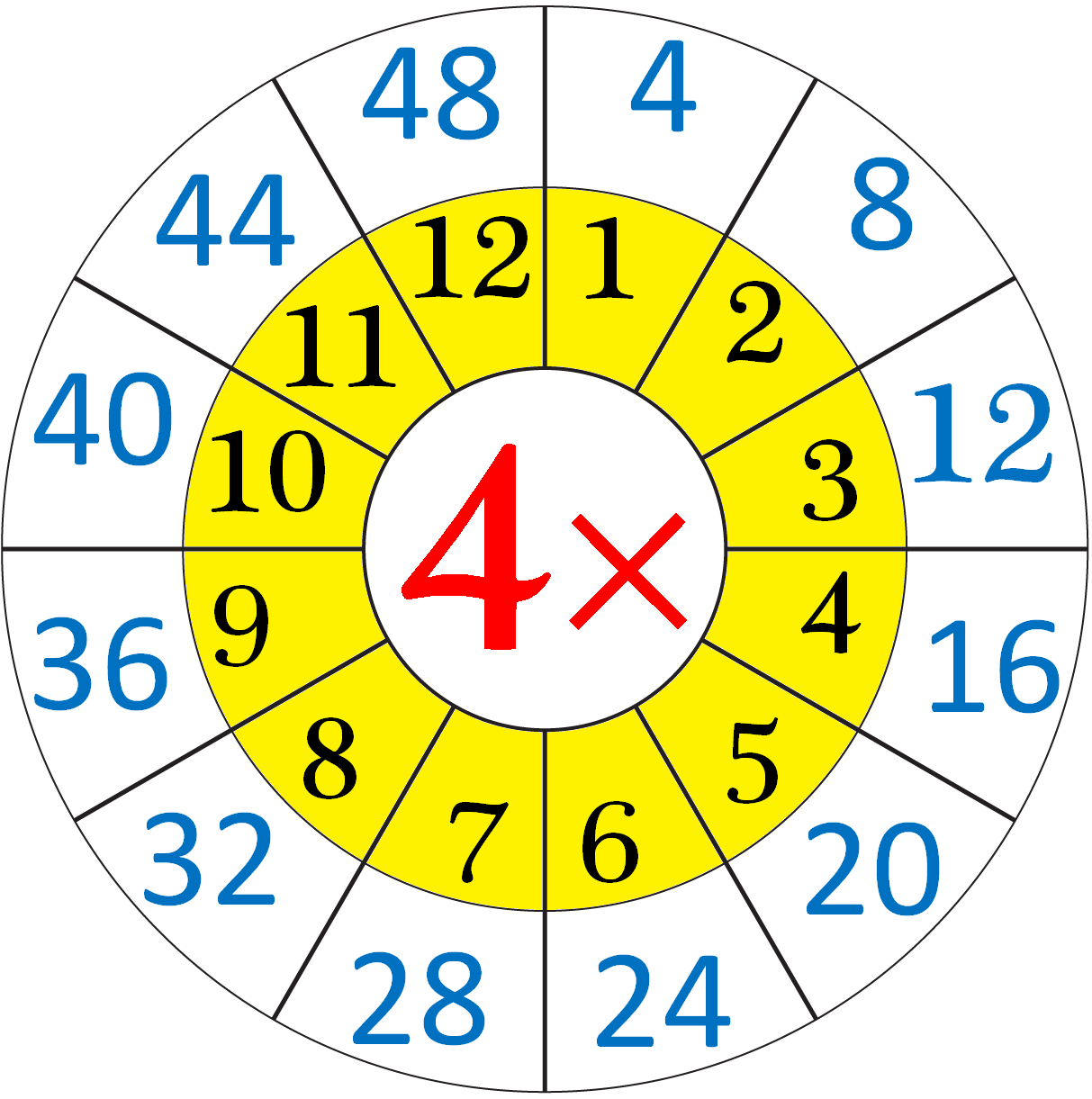
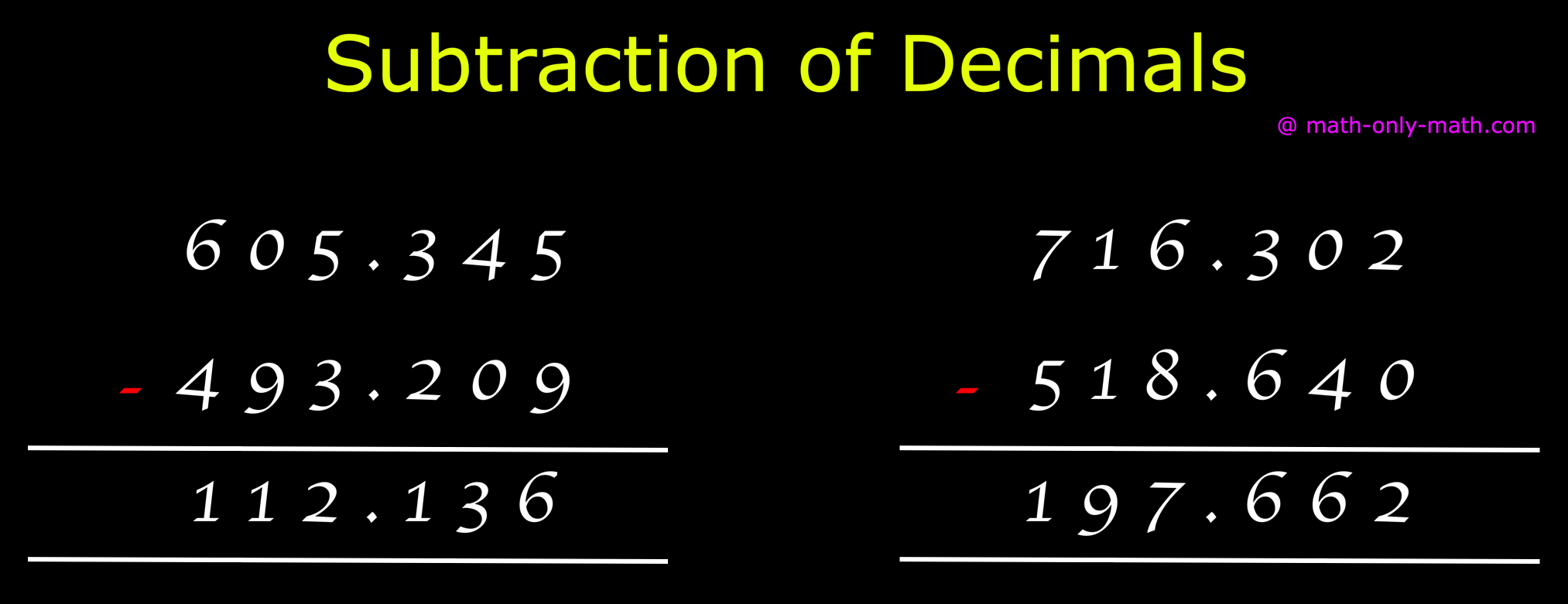
New! Comments
Have your say about what you just read! Leave me a comment in the box below. Ask a Question or Answer a Question.